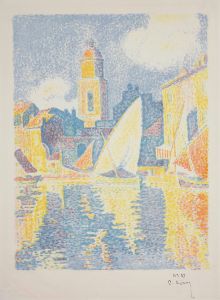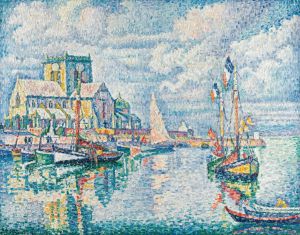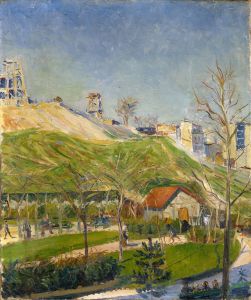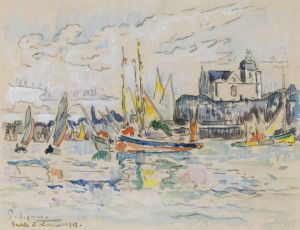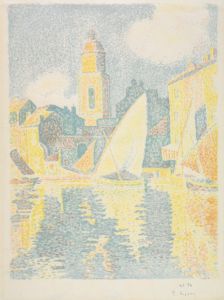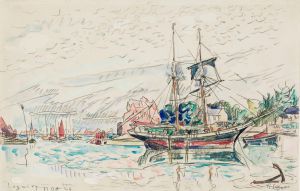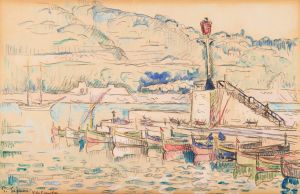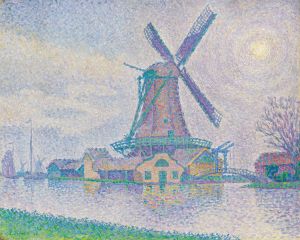
Venise
A hand-painted replica of Paul Signac’s masterpiece Venise, meticulously crafted by professional artists to capture the true essence of the original. Each piece is created with museum-quality canvas and rare mineral pigments, carefully painted by experienced artists with delicate brushstrokes and rich, layered colors to perfectly recreate the texture of the original artwork. Unlike machine-printed reproductions, this hand-painted version brings the painting to life, infused with the artist’s emotions and skill in every stroke. Whether for personal collection or home decoration, it instantly elevates the artistic atmosphere of any space.
Paul Signac's painting Venise (Venice) is a notable example of his work as a leading figure in the Neo-Impressionist movement. Created in 1905, the painting reflects Signac's mastery of the pointillist technique, a method of painting developed by Georges Seurat and later adopted and adapted by Signac. This technique involves the application of small, distinct dots of color that, when viewed from a distance, blend together to form a cohesive image.
Venise captures the vibrant and luminous atmosphere of Venice, a city that has long inspired artists with its unique architecture, canals, and interplay of light and water. Signac's depiction of Venice is characterized by his use of bold, bright colors and a harmonious composition that emphasizes the shimmering reflections on the water and the iconic structures of the city. The painting exemplifies his interest in capturing the effects of light and color, as well as his commitment to the scientific principles of color theory that underpin the Neo-Impressionist style.
Paul Signac was deeply influenced by the writings of Michel Eugène Chevreul, a French chemist whose theories on color contrast and harmony informed the work of many artists in the late 19th and early 20th centuries. In Venise, Signac's application of these principles is evident in the careful juxtaposition of complementary colors, which enhances the vibrancy and luminosity of the scene. The painting also reflects Signac's fascination with maritime themes, a recurring subject in his oeuvre, as he was an avid sailor and often depicted ports, harbors, and coastal landscapes.
The painting is part of a series of works Signac created during his travels in Italy, where he sought to capture the unique qualities of light and atmosphere in different locations. Venice, with its rich history and picturesque scenery, provided an ideal subject for his artistic exploration. Signac's Venise is celebrated for its ability to convey the essence of the city while remaining true to the principles of Neo-Impressionism.
Today, Venise is recognized as an important work within Signac's career and within the broader context of Neo-Impressionist art. It serves as a testament to his technical skill, his innovative approach to color and composition, and his enduring fascination with the interplay of light and water. The painting is housed in the Musée d'Orsay in Paris, where it continues to be admired by art enthusiasts and scholars alike.





